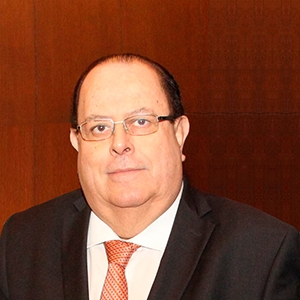Julio Velarde, chairman of the Central Reserve Bank of Peru, talked to Global Finance about the impact of Covid-19 and expectations for the future.

Global Finance: In Peru, the recession caused by the Covid-19 pandemic slammed the brakes on the economic expansion that started in 2019. What are your expectations for the country’s economic outlook for the rest of 2020 and for 2021?
Julio Velarde: In the context of the Covid-19 pandemic, Peru’s GDP is expected to drop 12.5% in 2020, the largest contraction in the last 100 years, due to the impact of a protracted and widespread lockdown on economic activity. The largest decline is estimated to have occurred in the second quarter of the year (-30.2% year-over-year), but a gradual recovery is expected in response to reopening measures. Along these lines, growth is expected to rebound to 11.5% in 2021, and economic activity is forecasted to recover to pre-crisis levels by 2022.
Real-time economic indicators confirm this. For example, daily electricity production is currently just 3% below 2019 levels, after falling by around 30% during the lockdown. Similarly, the value of card transactions has increased continuously since the restart of economic activities. In this context, 12-month ahead business expectations have recovered and are in positive territory since June.
GF: What are the main risks of the current crisis and what can the central bank do, as room for further rate cuts is limited?
Velarde: Mainly, the current crisis created the risk of a breakdown in the payment and credit chain. The Covid-19 breakout affected household incomes and firms’ cash flows, thereby limiting their capacity to pay obligations such as salaries, rents and debts owed to suppliers. In this context, government intervention became necessary to prevent a disruption of the payment chain, by providing adequate liquidity to the financial system and incentives to encourage lending by financial entities.
Peru’s Government Loan Guarantee Program (GLGP), known as Reactiva Peru, seeks to partially absorb the increased risk from the pandemic by creating incentives for financial entities to provide firms with the necessary working capital to cover their obligations, thereby enhancing their feasibility and reducing market uncertainty. The main GLGP features are designed to ensure adequate liquidity at a low cost. They are: 1) loan amounts tied to previous years’ tax returns, or credit history in the case of micro enterprises, 2) government guarantees of 80%-98% coverage, and 3) low-interest (0.5%) long-term funding provided by the Central Reserve Bank of Peru (BCRP) via auctions, allotted to financial institutions charging the lowest interest rates to firms. Accordingly, loans under the GLGP are granted at very low rates (1.4% on average).
At the beginning of the pandemic, the BCRP reduced its policy interest rate by 200 basis points to a historic low of 0.25%, the lowest in the region. At the same time, maintaining the policy rate at ZLB in a nonreserve currency country could entail the risk of encouraging a preference for FX in the face of falling trade terms or sudden capital outflows from EMEs. However, the BCRP has gained credibility over the years and keeps a large FX reserve buffer, amounting to $75 billion as of August 31, or 35% of GDP. Additionally, Peru holds a $11 billion precautionary Flexible Credit Line (FCL) agreed with the IMF during the second quarter of 2020.
This reduction in the policy interest rate has been accompanied by a large liquidity injection, mainly through repo operations, at an unprecedented scale in Peru. To date, the repo balance amounts to 8.5% of GDP, four times the amount of such operations during the global financial crisis. A large share of these operations is associated with the GLGP (up to $17 billion), which is expected to continue until the end of the third quarter of 2020.
The GLGP has provided counter-cyclical momentum to credit growth. As of July, credit to companies has grown 22.6% year-over-year (3.5%, excluding the GLGP). Consequently, this liquidity injection has brought M3 year-over-year growth to 24.5%, one of the highest observed during this crisis worldwide. The BCRP will maintain a strongly expansionary monetary policy under different modalities for as long as the negative effects of the pandemic on inflation and its determinants persist.
GF: What is your view on the economic outlook in Latin America for this year and next? Which countries have better growth chances?
Velarde: The economies of the region have been hard hit by the effects of the pandemic. Initial conditions certainly matter, from the development of an adequate health system to the macroeconomic response capacity, both fiscal and monetary, to face the crisis. In the last quarter, the region became an epicenter of contagion, but currently there are signs of improvement. For next year, we see a rebound in all the economies of the region, but the speed of recovery will depend on the ability to contain the disease and the effectiveness of macroeconomic policy in promoting sustainable growth. Additionally, global recovery and higher commodity prices will help sustain the upturn.



